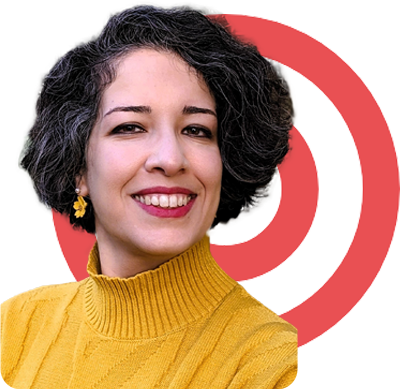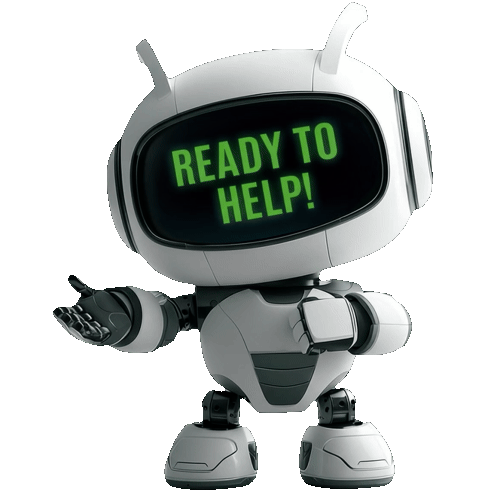Welcome to the GET2025 Geothermal Energy Conference
EAGE GET2025 invites you to join the Geothermal conference in Rotterdam. GET2025 will host Europe’s largest geothermal technical congress focusing on current developments in the industry, as well as the innovative solutions for scaling up geothermal energy production in future.
This is a unique opportunity to showcase the recent advances, trending topics, case studies, and novel geothermal applications to a global audience of academic and industry experts, operators, and policymakers. In addition, the panel discussions will give you concentrated expertise, current developments and the latest practical experience reports on timely geothermal topics.

Energy’s Future Unlocked
Join us to broaden your awareness, lead the discussions, and network with other professionals and stakeholders who share your passion on geothermal energy and its role in a sustainable and resilient future.
“I am pleased to welcome you
… to the EAGE GET Geothermal conference in Rotterdam. This event is a result of our shared vision to build a dynamic platform for the geothermal community to exchange knowledge, drive innovation, and foster cross-disciplinary collaboration. As the energy landscape evolves, geothermal energy is emerging as a cornerstone of the global transition, offering sustainable solutions across a wide range of applications—from district heating and industrial processes to power generation. However, to unlock its full potential at scale, we must accelerate deployment, enhance financial viability, and attract the capital necessary to drive commercialization.
“I am looking forward to welcoming you to Rotterdam
…and to join the Geothermal Energy Conference by EAGE Global Energy Transition. GET2025 will host Europe’s largest geothermal technical congress focusing on current developments in the industry, as well as the innovative solutions for scaling up geothermal energy production in future.
This is a unique opportunity to showcase the recent advances, trending topics, case studies, and novel geothermal applications to a global audience of academic and industry experts, operators, and policymakers. In addition, the panel discussions will give you concentrated expertise, current developments and the latest practical experience reports on timely geothermal topics.
Join us to broaden your awareness, lead the discussions, and network with other professionals and stakeholders who share your passion on geothermal energy and its role in a sustainable and resilient future.”
The EAGE GET conference brings Opportunities to:
Participant’s
Profile
Specialists, researchers, and scientists from leading operators, service companies, and academia will come together to exchange insights on the latest developments across the broad scope of geothermal energy.
We encourage oral presentations and posters exploring global perspectives on the use of geothermal within various geographical and geological settings and the latest developments, best practices, and challenges of the geothermal industry.
Geothermal professionals and geoscientists from other areas considering redeploying their skills and experience to the geothermal industry as well as community leaders and public officials interested in the geothermal industry are invited. Your participation will be invaluable for the success of this conference and the advancement of the geothermal field.
Abstract Highlights Available for Free!
Geothermal Energy
EAGE is excited to offer a curated selection of conference abstracts, available free of charge. These abstracts provide valuable insights into the cutting-edge content that will be presented at the event.
Stay up-to-date with the latest research and developments by following our LinkedIn channel for daily updates on newly published articles. Alternatively, you can check this page regularly to explore the latest featured abstracts and stay informed throughout the conference season.
Authors; Mr Joshua Mugisha¹², Dr Anton Shchipanov¹, Dr Khafiz Muradov³
Affiliations; ¹NORCE Norwegian Research Centre, ²University of Stavanger, ³Heriot-Watt University
Summary; Non-isothermal injection in wells (e.g. cold water into hot formation) brings challenges to Pressure Transient Analysis (PTA). The fluid properties may show large changes with temperature, which makes interpretation of pressure transients for injection periods a moving-front problem as opposed to classical well shut-in interpretations, with close-to-stable temperature front. Therefore, the classical PTA works well for fall-off interpretations of geothermal injectors, although requiring well shut-in and additional operational cost. Interpretation of flowing well data doesn’t bring additional costs and provides information about well-reservoir performance after injection started. In this paper, we study pressure transients at (1) non-isothermal single-phase injection to demonstrate similarities and differences between injection and fall-off periods; (2) multi-rate injection to estimate mobility front movement using PTA. Numerical simulations were performed and interpreted with analytical models using an industry-standard software. The study has shown that pressure transients for flowing periods are different from shut-ins, where the moving mobility front at injection is reflected with two transitions between low- and high-mobility derivative levels, as opposed to one transition observed for shut-ins. The interpretation also provides the mobility front position, helping in assessing geothermal injection performance. These results facilitate use of real-time pressure measurements for well-reservoir monitoring during injection operations.
Authors; Dr Quinten Boersma¹, MSc Max de Kruijf², MSc Freek Pals³, MSc Jasper Kwee¹
Affiliations; ¹IF Technology, ²TNO-AGE, ³Universiteit van Amsterdam
Summary; Geothermal exploration relies on understanding reservoir permeability distribution, which is influenced by various factors including diagenetic processes. Leaching can significantly enhance reservoir quality by creating improved permeability through the dissolution of unstable minerals and cements. This study presents a systematic approach for identifying leaching in Triassic geothermal reservoirs in the Roer Valley Graben (RVG) and the West Netherlands Basin (WNB). The workflow combines regional structural elements with petrophysical analysis and core slab observations. By correlating leaching occurrences with these elements, three leaching mechanisms were identified: subaerial leaching, downdip leaching, and fault leaching, with subaerial leaching exhibiting the most enhancing mechanisms. Using regional structures such as unconformities, these different leaching mechanism were mapped, enabling the identification of key leaching zones along the RVG and WNB basin fringes. Furthermore, a clear contrast between leaching-induced reservoir quality was identified between the southern-fringes and northern-fringes, with wells analyzed on the southern-fringe showing significantly better reservoir properties. These differences are most likely attributed to proximal-to-distal variations in facies composition between the basin fringes, with finer-grained reservoirs typically found in the more distal northern fringes. Finally, we propose that the leaching maps may help in finding zones with enhanced reservoir quality during geothermal exploration.
Authors; Dr Øystein Klemetsdal¹, Dr Odd Andersen¹
Affiliation; ¹SINTEF Digital
Summary; Approximately 50% of the EU's energy production is used for heating and cooling, with 300 TWh of recoverable industrial waste heat largely untapped. The mismatch between supply and fluctuating demand poses a challenge. Underground thermal energy storage (UTES), particularly aquifer thermal energy storage (ATES), can buffer this imbalance by storing and retrieving heat using subsurface water circulation. Despite environmental benefits and scalability, high initial costs and unpredictable performance due to limited subsurface data are issues. Numerical simulation tools assist in predicting outcomes but require extensive computational resources for high-resolution models.
Reducing grid resolution through upscaling can improve efficiency, but excessive coarsening may misrepresent physical processes. This study explores the performance of reduced models and the point at which a data-driven approach should replace physical parameter interpretation. Findings suggest that well-tuned coarse grid models can retain predictive power, given stable system configurations, balancing computational efficiency and accuracy.
Authors; Mr Federico Ceci¹, Luciana De Luca¹, Andrea Sirtori¹, Antonio Olaiz², Irene Garcia², Javier Torres, Axel Garcia², Guillermo Marro², Aldo Ambrogio³.
Affiliations; ¹SLB, ²Repsol, ³Geoinvest
Summary; In response to the global demand for sustainable and clean energy, efforts have been initiated to evaluate the potential for geothermal energy production in the Canary Islands, Spain. A comprehensive dataset was collected, covering the island of Gran Canaria. This work presents an integrated multi-physics analysis of gravity and magnetotelluric data, aimed at enhancing our understanding of the island’s geological conditions. The applied workflow involves the analysis and 3D inversion of a gravity dataset, which combines both legacy and public-domain data with newly gathered measurements, and 3D modelling of magnetotelluric soundings that cover the entire island. The ultimate goal is to gain a more refined multiscale understanding by integrating all available geological and geophysical information. This will facilitate the evaluation of the island’s potential for direct geothermal energy production and provide guidance for future exploration activities in the region.
Authors; Dr Carl Jacquemyn¹, Prof Matthew D Jackson¹
Affiliation; ¹Imperial College London
Summary; Aquifer Thermal Energy Storage (ATES) and open-loop unidirectional shallow geothermal systems can supply both heating and cooling. Both play an important role in providing a sustainable, and low-carbon solution for heating and cooling. Both use similar numbers of well pairs and have similar installation and operational costs. However, the seasonal reversal of ATES systems allows additional efficient energy storage, up to around 70-90% for well-balanced systems, whereas unidirectional open-loop systems rely on extracting energy relative to ambient aquifer temperature.
Shallow geothermal systems for heating and cooling can produce large amounts of energy and play a key role in decarbonising. However optimal systems depend on the angle, of construction, use and planning. Here we present numerical results to support design decisions for shallow geothermal systems. Even at very close well spacing shallow geothermal systems can produce similar amounts of energy compared to wide spacing, by vertically offsetting screen intervals. This also reduces the footprint and risks of interfering with neighbouring systems. The added benefits of storing heat and cool in ATES systems result in higher energy production potential than open-loop unidirectional systems.
Authors; Dr James Johnson¹, Ms Thekla Brun-Lie²
Affiliations; ¹Institute for Energy Technology, ² Equinor
Summary; A proposal for and exploration of the potential for an integrated renewable energy system targeting the combination of wind and geothermal energy. By integrating geothermal energy into currently existing and future wind power networks, it may be possible to significantly increase immediate power available to the grid while dampening uncertainty of delivery to said grid. This high level case study is placed in the framework of the Norwegian Continental Shelf, with a focus on understanding what factors and further knowledge would be required in order to realize such a renewable energy system. We propose a method for initial screening of opportunities, and utilize that method to show that 9 of 20 current license zones along the Norwegian Continental Shelf may be well suited for field studies of the proposed wind-geothermal cogeneration system in the future. These results may be more salient amongst the backdrop of increasing interest in offshore H2 production and storage utilizing wind power, which could be integrated into the proposed system.
Authors; Mr Quentin Hirsch¹, Mr Quentin Hirsch¹, Andoni Dominguez¹
Affiliations; ¹Swiss Geo Energy
Summary; Distributed Acoustic Sensing (DAS) is a technology that uses fiber optic cables as seismic sensors to record subsurface strain data. In the following study, we test the DAS technology during the acquisition of a 3D seismic geothermal exploration survey; the first of its kind in Switzerland. We assess the quality of acquired strain data and determine its potential for future passive microseismic monitoring. Active and passive seismic sources, including vibroseis sweeps, dynamite shots, and naturally occurring earthquakes, were recorded. We find that the DAS successfully records the vibroseis sweeps and dynamite shot with sufficient quality to detect propagation and assess the different subsurface wave types. DAS is also sensitive to noise, and the strain sensitivity is direction-dependent. Additionally, a M1.3 earthquake was successfully detected on DAS using the Swiss Seismological Database and data processing. We find that DAS has the potential to play an important role in seismic monitoring, notably for geothermal projects, but automatic detection requires a significant amount of data processing. Such real-time processing technology lacks sufficient maturity today. The acquired field dataset offers an excellent opportunity for the advancement of such research.
Authors; Dr Andreas Reinicke¹, Vedran Zikovic¹, Dr Frank van Bergen¹, Prof Roman Shor², Dr Jan Jette Blange³
Affiliations; ¹TNO, ² University of Calgary, ³Canopus Drilling Solutions
Summary; Multi-lateral well construction can be an effective tool to overcome challenges of reservoir heterogeneity and related uncertainties in production rates and projects economics. The drilling costs for multi-lateral well construction are high when performed with standard (mechanical) rotary steerable systems. Until recently, multi-lateral technology has rarely been considered for geothermal sites. The directional steel shot drilling (DSSD) technology developed by Canopus has the potential to enable multi-lateral drilling and lower costs by utilization of steel shot erosive action added to the drilling process. The energy available for rock removal is utilized more efficiently and a novel steering principle is introduced. The performance of the DSSD system has been investigated within the GEOTHERMICA ‘DEPLOI the HEAT’ project by full-scale lab experiments at TNO’s RCSG facility and field testing in Switzerland. The drilling tests have proven the optimized (mechanical) specific energy utilization and highlighted the improved rate of penetration during combined mechanical and steel shot drilling action.
Authors; Mr Dario Bonciani¹, Dr Amel Barich², Mr Marco Vichi¹
Affiliation; ¹COSVIG - Consortium for the development of Geothermal Areas, ²GEORG - Geothermal Research Cluster
Summary; Geothermal energy, a sustainable alternative to fossil fuels, faces significant challenges due to social resistance. This paper explores how to increase the social acceptance of geothermal projects, emphasizing the importance of integrating social sciences and engaging local stakeholders. Resistance often stems from a lack of familiarity with geothermal energy and the uncertainty surrounding its technologies. The NIMBY (Not In My Backyard) syndrome significantly impacts project acceptance, often leading to delays or cancellations.
The study, based on a systematic literature review, identifies effective strategies to prevent NIMBY opposition and promote social acceptance. Key strategies include early and transparent communication with local communities, involving local authorities and scientists, and highlighting the benefits of geothermal projects. Successful case studies, such as in St. Gallen, Switzerland, demonstrate the effectiveness of open communication and public involvement in decision-making processes. Conversely, projects with poor communication and lack of local engagement, like those in Strasbourg and Basel, faced significant opposition and even abandonment.
The paper recommends a phased approach to communication and stakeholder engagement, tailored to local contexts and continuously adapted throughout the project lifecycle. It underscores the importance of addressing socio-economic benefits and potential risks transparently to foster local acceptance and support for geothermal energy projects.
Topics
Geothermal Energy
The following topics are highlighted (but not limited to) for your abstract submission:
Submit your abstracts
before 15 June 2025
- Geothermal Resource Assessment at Basin Scale
- Geothermal Reservoirs Characterization and Modelling
- Geophysics and Multiphysics
- Subsurface Heat and Cold Storage
- Next Generation Geothermal System (EGS and AGS)
- Advancements in Drilling Technology and Well Completion
- Transitioning from Oil and Gas to Geothermal
- Unconventional Geothermal System Developments
- Addressing Environmental and Societal Impacts
- Data and Digitalization in Geothermal Energy
- Cogenerations and Cascade Use
- Mineral Extraction from Geothermal Brines
- Techno-economic Analysis of Different Geothermal Systems
2025 Committee
- Ghazal Izadi
XGS - Kris Hopstaken
EBN - Jeanette Hagan
ZeroGeo Energy GmbH - Alexandros Daniilidis
TU Delft - Thomas Mooij
PanTerra - Sebastien Soulas
Avalon Sciences Ltd - Andreas Busch
Heriot-Watt University - Mariane Peter-Borie
Look Up Geoscience - Habibollah Sadeghi
NGI - Luca Masnaghetti
SLB - Damien Bonte
BRGM - Saba Keynejad
Geocento - Thomas Olver
Geothermal Engineering LTD
- Adeline Parent
SLB - Adriaan Janszen EBN
- Ghazal Izadi
XGS - Kris Hopstaken
EBN - Jeanette Hagan
ZeroGeo Energy GmbH - Alexandros Daniilidis
TU Delft
Read More
- Thomas Mooij
PanTerra - Sebastien Soulas
Avaon Sciences Ltd - Andreas Busch
Heriot-Watt University - Mariane Peter-Borie
Look Up Geoscience - Habibollah Sadeghi
NGI - Luca Masnaghetti
SLB - Damien Bonte
IFP Energies nouvelles - Saba Keynejad
Geocento - Thomas Olver
Geothermal Engineering LTD
- Adeline Parent
SLB
Share your expertise, key learnings, and new developments in the energy transition!
Exhibitors


Company name

Company name





